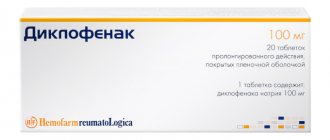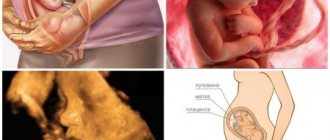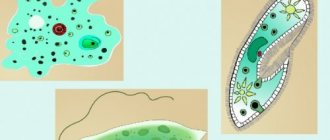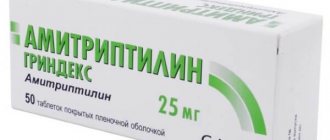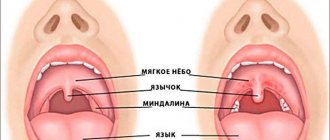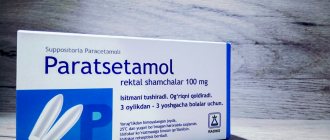Main properties of the drug
Nifedipine is a calcium channel blocker that inhibits the flow of calcium ions through the membrane of cardiomocytes and vascular smooth muscles.
Inhibition of the accumulation of calcium ions in cardiomyocytes prevents the depletion of myocardial energy reserves, providing a protective effect on the heart muscle. The drug lowers blood pressure (BP), reduces pain in the chest associated with myocardial hypoxia, and improves post-stenotic circulation in atherosclerotic obstruction.
Release form
The drug is for oral administration. Nifedipine is available in the form of round, biconvex, film-coated tablets. The color of the tablet is yellow.
Compound
The main active ingredient is nifedipine (content in 1 tablet - 10 mg), practically insoluble in water, difficult to dissolve in alcohol. Additionally, the drug contains the following auxiliary components:
- lactose monohydrate;
- microcrystalline cellulose;
- wheat starch;
- gelatin;
- magnesium stearate;
- talc.
How to use?
The regimen for taking Nifedipine is always determined individually, since the required dosage is selected taking into account a large number of factors, especially when it comes to pregnant women. The manufacturer recommends the dosage regimen given below.
Capsules and tablets (0.1 g)
Adult patients:
1 tablet/capsule 3-4 times a day.
- Variant angina, severe form of hypertension.
2 tablets/capsules 4 to 6 times
- Hypertension.
1 tablet (if prescribed by a doctor, you can increase the dose for a single dose to 20-30 mg) 3 times a day
- Angina pectoris (according to the same scheme, the drug is prescribed for hypertensive crisis).
1-2 tablets (under the tongue or orally in capsule form), if necessary, repeat after 10 minutes
- Hypertonicity of the uterus.
1 capsule/tablet 3 times a day
For intravenous solution
This dosage form of the drug is used primarily for the treatment of hypertensive crisis. The dosage in this case is 5 mg of the drug.
The infusion must be done by drip over 4-8 hours at a rate of 6.13-12.5 ml/h. The maximum daily dose should not exceed 30 mg. Infusion therapy is carried out for 3 days, then the patient is transferred to oral administration.
Side effects
The use of Nifedipine is often accompanied by side effects, for example:
- disturbances in the functioning of the heart and blood vessels (facial hyperemia, fever, tachycardia, pain in the heart area, fainting);
- leukopenia;
- thrombocytopenia;
- deterioration of hearing and vision;
- bronchospasm;
- myalgia, limb tremors, convulsive syndrome;
- digestive disorders (nausea, change in stool);
- gum hyperplasia;
- migraine;
- numbness and swelling of the upper and lower extremities;
- anemia;
- allergic skin reactions (eczema, urticaria, itching).
Only a doctor should make a decision to discontinue the drug, since sudden cessation of use can lead to a deterioration in the woman’s condition and well-being.
Why is it prescribed for pregnant women?
Nifedipine primarily reduces high blood pressure. It is commonly used to treat angina attacks due to coronary artery disease. It also has a strong antispasmodic effect on the smooth muscles of internal organs.
It is for this reason that gynecologists prescribe it to pregnant women, but not earlier than the 16th week, when the potential threat of dangerous effects on fetal development decreases. According to the FDA category of action on the fetus, nifedipine is classified as category C. The results of animal studies of drugs in this group revealed their negative effects on the fetus.
No studies have been conducted among pregnant women. Presumably, the expected benefit may justify taking it, regardless of the risk.
In accordance with the instructions, drugs containing nifedipine are not recommended for use during pregnancy , since to date there have been no reliable studies assessing its effect on this category. Since the main active ingredient is excreted in the milk of a nursing woman, Nifedipine is also not indicated during lactation.
However, the American Association of Pediatrics and the European Society of Cardiology have approved the use of Nifedipine in the treatment of pregnant women with abnormalities in the cardiovascular system.
In Russia and some CIS countries, doctors prescribe nifedipine to expectant mothers to relieve increased uterine tone when there is a threat of miscarriage or premature birth. However, use is justified only if the patient has an increased risk of angina or heart attack, heart rhythm disturbances, hypoxia or renal failure.
In the early stages
In the first 13-14 weeks of pregnancy, the use of this drug is prohibited, since the potential risks to the fetus do not justify the expected benefits to the mother.
Starting from the 3rd week, all the organs and systems of the unborn child are formed. It is during this period that the fetus is most vulnerable to negative external influences, and the risks of side effects of medications are greatest.
During the second trimester
At this stage, the formation of organs and systems is completed; at 16-17 weeks, the unborn baby gradually begins to accumulate subcutaneous fat. External factors no longer pose such serious threats as during the first trimester. Since the body of the future baby is practically formed, the task of maintaining pregnancy comes to the fore.
In the second trimester, uterine hypertonicity can lead to fetal hypoxia and pregnancy loss. Abdominal cramps, especially those accompanied by bloody discharge, are a reason to immediately consult a doctor.
Starting from 16-18 weeks, with increased uterine tone, the gynecologist may well prescribe Nifedipine, especially if the pregnant woman has a history of problems with high blood pressure.
In the third trimester
As in the second trimester, the use of Nifedipine in the 3rd trimester for appropriate indications is quite acceptable. A doctor observing a pregnancy, weighing the potential risks and possible benefits for a particular patient, may give preference to this particular drug.
Reference. Traditionally, for uterine hypertonicity, obstetricians preferred to prescribe Genipral. However, recently more and more doctors are abandoning this drug in favor of Nifedipine, since the side effects when taking it are often less pronounced.
Is nifedipine dangerous during pregnancy or not?
The question of the danger or safety of nifedipine for a developing fetus is quite complex. Some sources indicate that the drug is absolutely safe for use in pregnant women, and that certain studies support this. Others note that adequate and strictly controlled studies on this matter have not been conducted at all, and therefore the use of nifedipine for the treatment of pregnant women is not recommended. Still other sources claim that the studies were nevertheless carried out, and their result was the conclusion: this drug has an embryotoxic, fetotoxic and teratogenic effect on the fetus. Other sources claim that nifedipine is dangerous in the first months of pregnancy, but not in subsequent months. Allegedly, this is evidenced by a huge number of real observations. There is also information that studies were carried out, but not on people, but on animals, and a dangerous effect was still established. But, as it turned out, in that case the dose of the drug was several times higher than that allowed for human consumption. So what does this all mean? How to make sense of a large number of contradictory statements? In fact, it is best to resolve this issue on a case-by-case basis. The doctor must assess the existing risks to the health of the woman and the unborn baby, both from the disease and from taking the drug, and decide for himself whether it is worth taking nifedipine in a particular case and in what doses.
Instructions for use and dosage
The dosage regimen, frequency and duration of administration are prescribed by the attending physician, based on the patient’s medical history. Self-prescription or discontinuation of the drug, reducing or increasing the dose at will is strictly prohibited, as it can lead to irreversible consequences for the pregnant woman and the unborn child.
Nifedipine preparations of rapid or prolonged action are produced - the so-called retard drugs, which differ in the rate of absorption into the blood, the duration of action and the severity of side effects. The doctor prescribes a specific form of the drug, and it is unacceptable to replace regular tablets with retard tablets on your own.
For a pregnant woman, the course of treatment can vary from 10 days to 1.5 months, but sometimes the drug is prescribed once, in case of pronounced uterine hypertonicity and angina attacks. Nifedipine causes withdrawal syndrome if it is abruptly stopped, so in no case should you interrupt an already started course of treatment.
How to take the tablets: orally, after meals, with water. In case of an attack of angina pectoris or high blood pressure, the tablet is placed under the tongue.
After taking the medicine, it is recommended to lie down for about half an hour to avoid unpleasant symptoms accompanying a decrease in blood pressure.
Compound
This therapeutic effect of nifedipine is provided by the active component of the same name in the chemical formula, which acts directly on the blood vessels, but does not affect the activity of the myocardium. Its main task is to expand the vascular walls, increase the lumen for the passage of blood in the usual rhythm. The presence of nifedipine allows you to successfully combat the signs of angina pectoris, quietly removes pressing chest pain, the occurrence of which remains a mystery for a pregnant woman. For hypertension and pregnancy at the same time, there is no better treatment available
- How to make homemade donuts
- Proper nutrition for weight loss: menu for every day
- What is chickenpox in children and adults. The first signs, symptoms and timing of treatment for chickenpox
Contraindications
The drug is used with caution in the following cases:
- chronic heart failure;
- liver or kidney dysfunction;
- for diabetes mellitus;
- severe cerebrovascular accidents.
Absolute contraindications for use are:
- up to 16 weeks;
- low blood pressure (arterial hypertension);
- heart failure (in the stage of decompensation);
- tachycardia;
- hypersensitivity to the components of the drug;
- severe aorterial stenosis, etc.
Side effects
Nifedipine is usually well tolerated, but in some cases side effects may occur:
- facial hyperemia and feeling of heat;
- peripheral edema of the legs;
- extreme decrease in blood pressure;
- dizziness and headache;
- drowsiness;
- nausea, diarrhea or constipation;
- itching, urticaria and some other manifestations of an allergic reaction;
- changes in visual perception;
- hyperglycemia, etc.
If the symptoms described above occur, as well as other alarming reactions of the body, the pregnant woman should immediately consult a doctor to adjust the dose or completely discontinue the drug.
Combination of nifedipine and magnesia
Nifedipine cannot be combined with magnesium, since signs of magnesium intoxication and manifestations of cardiotoxic effects can occur even against the background of a therapeutic concentration of magnesium in plasma, therefore, a neuromuscular block can be obtained.
Magnesia preparations are not prescribed together with nifedipine to stop labor; moreover, there is strong evidence that magnesia is not able to stop labor, it only weakens uterine contractions.
Its main use is the treatment of preeclampsia, and even then short-term (use of intravenous drip injections no more than 78 hours before delivery and 48 hours after delivery).
The use of magnesia in early pregnancy is accompanied by serious side effects on the fetus and mother.
In the mother, magnesium can cause complications such as:
- nausea, hot flashes
- headache
- dizziness
- visual impairment
- respiratory and cardiac dysfunction
- as well as pulmonary edema
In addition, magnesium has no effect on uterine hypertonicity, despite the fact that magnesium droppers are prescribed very often in our hospitals.
Analogs
There are analogues of this drug, produced with different dosages of the active substance:
- Cordafen;
- Cordipin;
- Corinfar;
- Cordaflex;
- Adalat;
- Fenigidin and others.
In addition to the above, the pharmaceutical industry produces long-acting drugs containing nifedipine:
- Cordipin retard;
- Corinfar retard;
- Adalat-SL;
- Nifebene-retard et al.
Feedback from pregnant women about use
Most patients and obstetricians note the weak effectiveness of the drug against uterine hypertonicity, so for these purposes Nifedipine during pregnancy may not be the most optimal solution. However, the drug may be prescribed for these purposes if it is justified by the individual characteristics of the pregnant woman.
Due to the toxicity of the drug and the negative effect on the nervous system, vision problems and confusion were sometimes noted. Some patients taking Nifedipine during pregnancy complain of hot flashes, constipation and other gastrointestinal problems.
Traditional methods of preventing increased uterine tone
First of all, with increased uterine tone, it is recommended to rest as much as possible and, if possible, avoid stressful situations. Traditional medicine for such conditions recommends using:
- infusions of motherwort or lemon balm;
- a mixture of valerian root and linden flowers.
However, during pregnancy, before you start taking any medications or infusions, you should definitely consult your doctor.
Summarizing the above, we can conclude that although Nifedipine is not a drug created specifically for pregnant women, in some cases its use (including with uterine hypertonicity) is justified. However, this medicine should be taken only as prescribed by a doctor and strictly under his supervision.
Effect of the drug on the fetus
In the course of numerous clinical studies, Nifedipine was classified as a “C” group of drugs. Its use during pregnancy is possible only if there are serious indications from the mother, since the drug can negatively affect the fetus.
The drug does not have a teratogenic effect - it does not cause congenital deformities and anomalies in the fetus. Also, scientists have not identified the toxic effect of Nifedipine on the body of the unborn child.
Taking the drug at the end of the 3rd trimester is a risk factor for the development of primary weakness of labor. That is why, if possible, the expectant mother should stop using the drug after 38 weeks of pregnancy.
